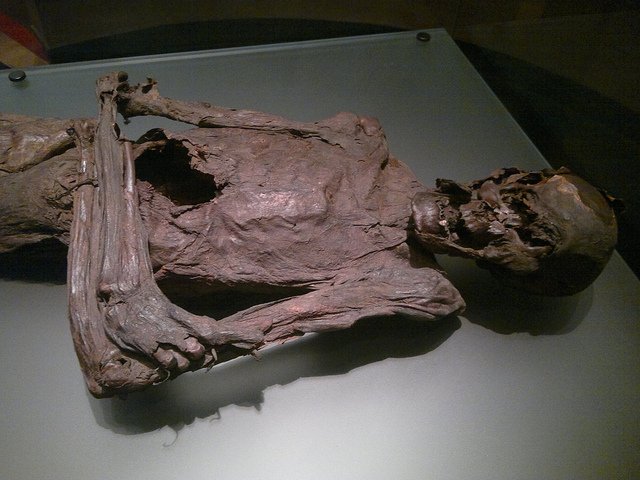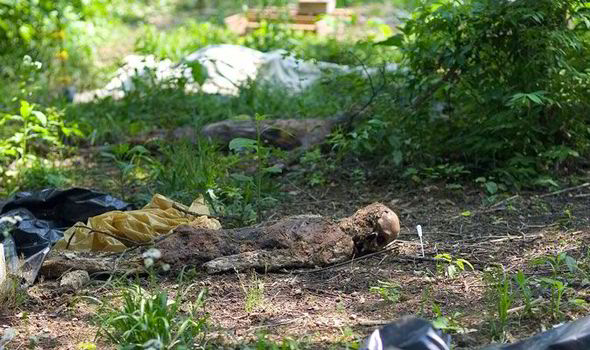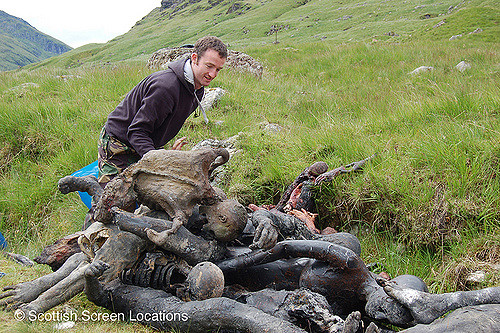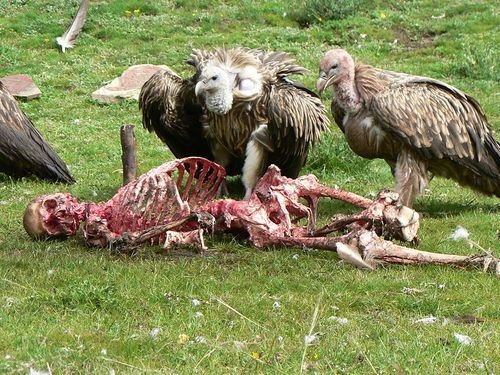
Decomposition Photos (Warning - Includes graphic pictures)
What happens to a buried body depends entirely on the conditions under which the body is buried, the body itself and the environmental conditions of where it’s buried.
If a person is buried in a high-quality casket, with additional concrete “grave vault”, and the body has been treated with standard embalming techniques, it can remain much intact for a very long time.
A body buried directly in the ground without a coffin will rapidly decompose depending on the acidity and moisture of the soil. Even the skeletal remains may begin to decompose in fairly short order.
It can take a decade for a body to decay, as there are many factors that will determine how the decomposition will take place. These factors include how well the person was embalmed, soil type, water level, cold, heat, dept of the ground, humidity, type of casket, vault it were placed in, the availability of oxygen, clothing, body size and weight, accessibility by insects or scavengers, and the surface on which a body rests all determine how fast a fresh body will mummify or skeletonize.

In a situation where there is free access of air, a body will decompose twice as fast than if immersed in water and up to eight times faster than if buried on earth. However, a body that was buried for decades could still look fine while others of the same era are completely decomposed. There are numerous factors that affect the rate of decomposition to give a definitive answer.
UPON DEATH
Nature is very efficient at breaking down human corpses. When someone dies, the heart stops pumping blood around the body, thus depriving the cells of oxygen, which rapidly begins to die.
Decomposing usually start almost immediately after death, with the skin going through several changes in colour the moment blood stops circulating, leaving the body an ashen color.
However, different cells die at different time. For example, brain cells die within a few minutes while skin cells can survive over 24 hours after death.
According to memorial page
Soon after death rigor mortis occurs, which is caused by a complex chemical reaction (involving lactic acid and myosin), which forms a gel like substance which creates the body's stiffness. Rigor mortis lasts approximately 24 hours (depending upon ambient temperature).
Upon death, blood also starts to settle in those parts of the body that are closest to the ground, turning the top part grayish white and waxy looking, whilst darkening the underside. This results in a deep red-brown stain. For example, if a person was to die and keel over head-first then the blood would settle in their head, which would result in a bruised-like stain to the face and neck. Body extremities will naturally turn blue within 8-12 hours without intervention (eg embalming).
Funeral directors (Undertakers)
try to lift the head of a corpse in the coffin in order to prevent the face from discolouring. Another thing they do is to make sure that the body is properly groomed. The hair is usually washed and combed, while the face is made-up with cosmetics that will match with the person's natural skin colour as when they were alive.
Undertakers also use glue to shut the lips and eyes as these naturally draw back and the eyes will sink. It is a myth that hair and fingernails continue to grow even after death. What happens is that the skin usually dry out and pulls away from the nails and hair which makes them stand out more prominent, giving the illusion of growth.
When a body is buried six feet down without a coffin, in ordinary soil, an unembalmed adult normally takes about eight to twelve years to completely decompose to a skeleton. However, if it was placed in a coffin, the body can take many years longer, depending on type of wood used for the coffin.
I have personally seen a case where a body was exhumed in an oak coffin and it was found to still be in a state of decomposition thirty years after it was buried. This shows that the coffin that houses the body determines how decomposition will take place.

STAGES OF DECAY
Initial decay (autolysis) - externally, the corpse may look very okay, but internally, the organs are already breaking down.
Putrefaction- after two to three days, bacteria becomes active and the body is swollen with gases and accompanying odours.
Black Putrefaction- the skin begins to turn black and the corpse collapses as gases escape.
Fermentation -very strong odours with some surface mould but the body has begun to dry out.
Dry Decay - The cadaver has for the most part dried out and the rate of decay has slowed considerably.
EMBALMING
Embalming only slows decomposition, it does not stop it indefinitely. Embalmers always try to pay particular attention to those parts of the body that can be seen by mourners, e.g the face and hands
The chemicals that are used in embalming slow down bacterial putrefaction by stopping the action of cellular proteins, which means that they cannot act as a nutrient for bacteria, and end up either killing or slowing most of them down.
DISPOSAL
As said earlier, decomposition in the air is twice as fast as when the body is under water and four times as fast as underground. A corpse that is left above ground is rapidly broken down by animals and insects, including the carrion fly maggots, beetles, ants and wasps. A corpse can become a moving mass of maggots within days, even hours in hot climates.
Approximately 150,000 maggots can be found on an exposed corpse. Left above ground the the main body cavities burst open and the tissues become liquefied after about a month or so.
MUMMIES
In extremely dry or cold conditions, the normal process of decomposition can be halted, either by a lack of moisture or temperature, which controls the bacterial and enzymatic action - effectively turning them off. When this happened the body is preserved as a mummy. If frozen mummies are thawed then the decomposition process will restart, and the same will happened to the ones preserved in sand, such as Egyptian mummies, if exposed to moisture.
REFERENCES


Congratulations! This post has been upvoted from the communal account, @minnowsupport, by Tosyne2much from the Minnow Support Project. It's a witness project run by aggroed, ausbitbank, teamsteem, theprophet0, someguy123, neoxian, followbtcnews, and netuoso. The goal is to help Steemit grow by supporting Minnows. Please find us at the Peace, Abundance, and Liberty Network (PALnet) Discord Channel. It's a completely public and open space to all members of the Steemit community who voluntarily choose to be there.
If you would like to delegate to the Minnow Support Project you can do so by clicking on the following links: 50SP, 100SP, 250SP, 500SP, 1000SP, 5000SP.
Be sure to leave at least 50SP undelegated on your account.
Downvoting a post can decrease pending rewards and make it less visible. Common reasons:
Submit